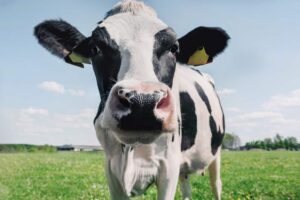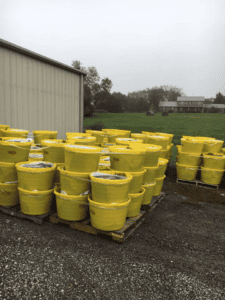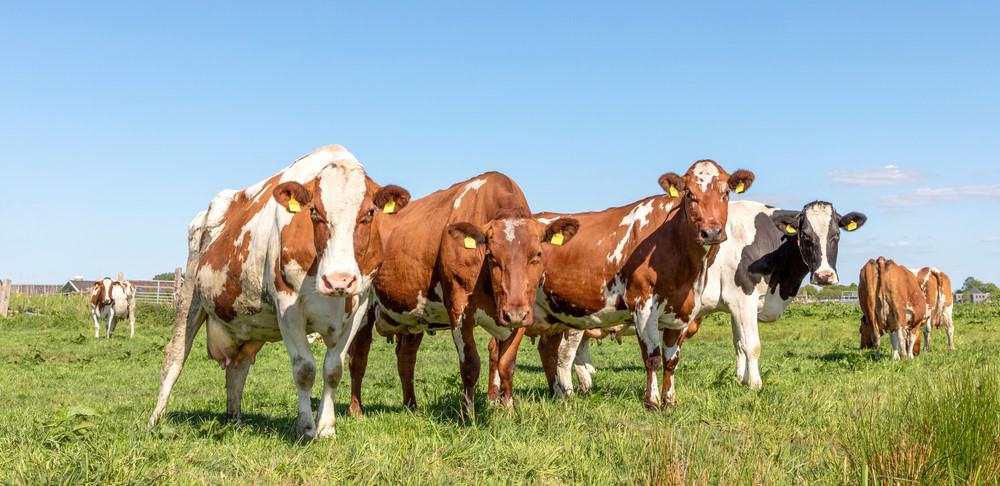Your cattle can’t tell you what is lacking in their diet, so it’s up to you to figure it out. While you can ideally monitor nutrition factors using protein and calorie intake calculators, some nutrients must come from supplements. And this is where protein tubs for cattle come in.
Just like humans, cows also need their recommended daily protein intake to help their bodies develop. And at times, they need more nourishment than they can get from pasture feeding alone.
Cows have a recommended daily intake of fiber, calcium, calories, salt, carbs, sodium, sugar, water, dairy and protein. Unfortunately, their entire daily intake is not nutrients they can get just from grass or pasture feeding. These all have to come from supplements like biotin.
Protein, mineral, and vitamin supplements go a long way in ensuring the cows are healthy and productive. Most animal tissue and organs need lots of protein as it is used as building blocks to encourage growth and tissue regeneration. These building blocks are what make for extremely hardy breeds such as Ongole cattle and other beef cattle.
As a farmer, cattle producer, or cattleperson, you must be careful about what you feed your cattle. As such, keeping an eye on their daily water, protein, and sugar intake is necessary, and so are the kinds of protein tubs you give them.
What Are Protein Tubs for Cattle
Cattle protein tubs are made of a mixture of ingredients that provide cattle with the protein supplement they need but can’t get from normal pasture. In many cases, these ingredients are mixed with molasses, which contains a host of minerals and some vitamins. Cows lick from the supplement as they wish.
Typically, these protein tubs, protein buckets, or lick tubs come in compressed blocks that can either be in a plastic tub or cardboard box. They are supplements made for beef cattle who are on forage diets. The cattle can feed at the tubs as they choose.

How Protein Tubs Work
Rumen microorganisms require protein supplements as a nutrient source. This easily digestible protein aids in the fermentation of fiber in otherwise dormant forages, providing energy and enhancing the metabolism of all other nutrients in the feeds.
Tubs supplement the protein levels and, at the same time, increase forage intake and improve digestion. The cows get additional energy in the process.

How to Use Cattle Protein Tubs
To optimize returns from protein tubs, you should start by establishing their prevailing protein requirements. This varies throughout the year and highly depends on the cattle’s production stage.
Young calves and lactating cows, for instance, will have higher protein requirements than older cows. This is due to growth spurts that need proteins to develop tissue and muscles.
Then there’s the weaning to puberty stage, where the animals experience increased protein deposition. During this stage, the recommended requirement for protein intake is quite high.
There are also other categories, such as calving cows or just calving. The recommended protein intake for these animals tends to be highest within the first two months after giving birth to the calf.
This is mostly due to the increased demand placed on their bodies by the lactation process. However, this need subsides as the calf is weaned but will increase again once the cow gets pregnant and the fetal development begins.
When starting with protein tubs, feed limited amounts for the first few days. Then allow free choice when the cattle are grazing.
General rule is to provide 200 pounds for 10 head of cattle. Check every 5 days to see about replenishing. When consuming protein blocks it’s essential the cows have access to water and roughage as well.
If using a protein tub that contains urea, be sure to not allow the cattle to have other sources with urea.

The Benefits of Using Protein Tubs for Cattle
The simple fact that your cattle need these protein tubs to remain healthy and grow strong means they have many inherent benefits. These include:
- Ease of use: You don’t have to invest in feeding troughs, and they don’t occupy much of your storage space. They are easy to stack, simplifying hauling and storage on the farm. You can provide supplements for your stock with a minimal labor increment.
- Supplement forage: Protein tubs are often best utilized with low protein forages and feeds or when the forage is low quality and inadequate for the cattle’s needs. What Does Clover Do to Cattle
- Convenient to use: Besides being easy to use, protein tubs are convenient. All you have to do is find the right place to put them, somewhere the cows can easily get to them and then forget about it.
- Consumption is self-limiting: Thanks to how the proteins are usually packaged and presented, consumption by cows is often self-limiting. The licking motion often regulates consistent consumption, which prevents overeating.
- Improves pasture utilization: As soon as the cattle get used to taking the protein supplements, you can move them around. The cattle will move around with it or go where the protein tub is, ensuring they utilize the pasture in that area.
Disadvantages of Using Protein Tubs
Unfortunately, some disadvantages come with using protein tubs. These include:
- The protein tubs are only meant to supplement the cows’ nutritional needs instead of being used as feed.
- If there isn’t enough forage to go with the protein supplement, the cattle may not consume enough of it to meet their specific needs.
- Protein tubs can weigh over 200 pounds, making it difficult to unload or move around the pasture. Keep in mind a protein tub that’s 200 pounds should support 10 cows for 5 days.
- Chemical-hardened protein tubs tend to deteriorate with time.
There’s no doubt about it; your cattle need protein supplements. The trick is in identifying the best protein tubs. To do this, you must determine the main components of the tubs by reading the ingredients section. They are typically listed in order from the ingredient with the highest concentration to the one with the least concentration.
The more moisture the protein tub has, the less expensive it will be. This is because there is a higher water concentration in the product discounted from the final price. The moisture content should be considered when evaluating a protein tub’s cost-effectiveness.

